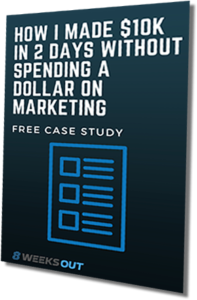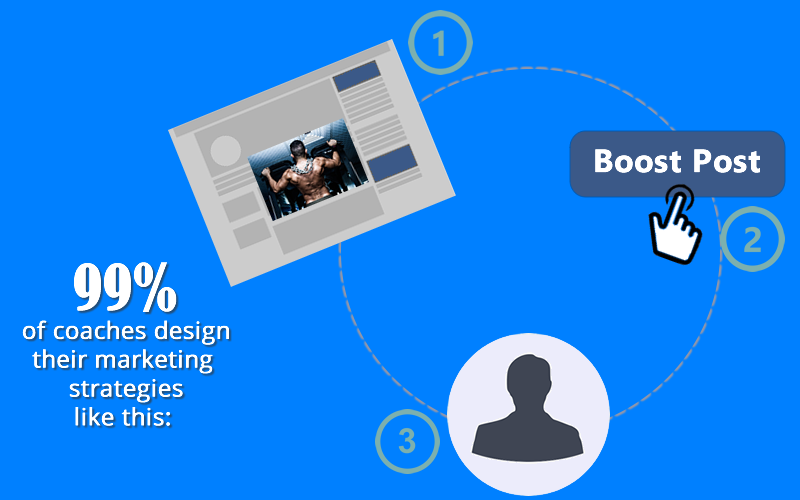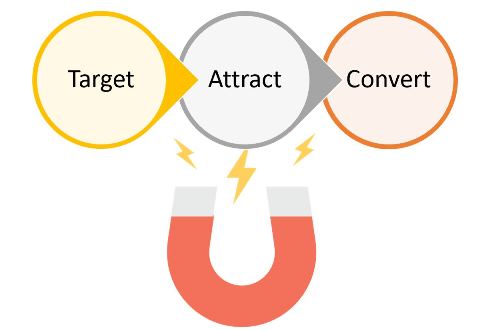FREE Coaching Business Case Study: How I Generated More than $10,400 in 2 Days—Without Spending a Single Dollar on Marketing
Are you a coach that relies on constantly generating new leads to bring people in the door
and build your business?
Would you like to attract more of the right types of clients and increase your revenue?
In this case study, I’m going to teach you exactly how I generated over $10,400 in two days without spending a single dollar on marketing.

Even more, using this same strategy, I was able to build an entirely new program that brought in an additional six figure of revenue within just a few months.
If you’re a fitness business owner that’s struggled with the business side of coaching, then what I’m about to share with you is hugely important if you want to take your business to the next level.
So, let’s talk about how most coaches and fitness business owners approach their marketing today and what I did differently.
How 99% of coaches approach their marketing
99% of coaches and fitness business owners design their marketing strategies using what I call the “fishing net” strategy

In its simplest form, the fishing net approach looks something like this:
- Design a FB ad, flyer, etc., that talks your gym or training and shows pictures of them training people along with some before and after pictures.
- Promote the ad, distribute the flyer, post all over social media every day and wait for people to show up.
- Try to sell training sessions and packages to anyone and everyone that walks in the door
This is essentially like fishing by throwing a giant net out into the water and hoping a bunch of fish get stuck in it.
Does this sound familiar?
I can almost guarantee it does because pretty much every coach, trainer and fitness business owner has tried this approach.
I know I have, and when I was first starting my gym, it’s pretty much all I did.
The problem with the fishing net approach to fitness marketing
Using this approach, I was able to catch a few fish here and there, but more often than not, I found myself working 60-70 hours a week or more and having very little money to show for it.
Every day was a long one and my marketing was doing just enough to keep my bills paid and the doors to my gym open, but not by much.
Over time, what I learned was that the fishing net approach to marketing doesn’t really work for a lot of reasons:
- It doesn’t target the right clients. You often waste time and money marketing to the people that are unmotivated and unlikely to stick around long even if you do get them in the gym.
- Every other coach and gym owner is using the exact same approach. It’s next to impossible to stand out if your marketing looks the exact same as everyone else’s.
- Most of the people that come in your door aren’t ready to sign up because they don’t really know, like, or trust you. Marketing is always about relationship-building, and you can’t build a relationship in a 30 minute consult.
- It’s time consuming and expensive. Buying ads, creating web pages, building a social media following, etc., isn’t cheap or quick and there are only so many hours in a day.
For three straight years, I ran my marketing using the fishing net approach and I felt like I was barely keeping my head above the water.
It wasn’t until March of 2006 that I finally discovered an entirely new approach to marketing, something I call the Client Magnet Method, and it literally changed my coaching business forever.
Since discovering the Client Magnet Method
- I’ve been able to attract highly-motivated clients to my gym and online business that are committed to their goals and willing to pay for my time and products
- I’ve used the exact same strategies over and over again to build a 6-figure gym and a 7-figure online coaching business
- I’ve stopped wasting time and money on ineffective marketing that didn’t increase my revenue
How does the Client Magnet Method Work?
The client magnet method doesn’t try to market to as many people as possible. Instead, it’s built around the following two principles:
- Marketing should be highly focused around helping a targeted group of people understand how your services can solve their specific problems.
- Your prospective clients need to know, like, and trust you before you ask them to commit to your higher priced services and programs. Effective marketing is about relationship-building.
Instead of trying to cast a net that catches whatever gets stuck in it, the client magnet method is designed to attract the right clients and build a relationship with them before trying to close the big sale.
This happens in three different stages which together make up The Client Magnet Marketing Funnel.

Stage One: Target
The first stage of the funnel is to carefully define exactly who you want to market to and understand what their primary problems are. The goal is define your perfect client as specifically as possible.
Avoid targeting overly broad groups like those interested in “weight loss” or “body composition,” because your marketing needs to be more like a laser than a shotgun. This means keeping your audience narrow and focused.
In this case study example, I targeted volleyball athletes.
More specifically, I targeted volleyball athletes between the ages of 13 - 18 that played competitive volleyball at the club level.
This is a much narrower audience than athletes in general, or even just anyone that plays volleyball, for example.
Once you’ve defined your audience, the next step is to dig into uncovering what their primary problems (pain points) are. This means understanding more than just what their goals are.
You need to know what’s preventing them from reaching those goals in the first place.
Understanding this is the real “magic” of effective marketing. It’s what allows you to create the right message that you’ll use in stage two to get them in the door. Get this right and everything else will be a piece of cake.
Stage Two: Attract
In stage two, you’ll create an event designed to solve the specific pain point you discovered in stage one. Then you’ll promote this event to your target audience.
Why an event?
Simple. Events like workshops, clinics, etc., are the best way to bring someone new in the door. They are relatively low cost, low commitment and they’re only available on a single day or for a limited time. This creates a natural sense of scarcity and urgency that forces people to take action.
When I hear people say they’ve tried events before and they didn’t work, it’s always because they didn’t get stage one right. Your event needs to be laser focused on helping your specific audience solve their biggest problem.
I framed my event as, “The Ultimate Volleyball Vertical Jump and Injury Prevention Workshop.” I did this because almost every volleyball player wants to jump higher and avoid injuries.
If you were a volleyball player, it would be easy to see exactly how this workshop could help you jump higher and stay on the court.
Notice that I didn’t call it a “Sports Performance clinic” or some other sterile, generic-sounding title that doesn’t solve a real problem. Remember, you have to speak to your audience’s biggest pain points.
Why should always charge for your time
I typically charged between $100 - $150 for these types of workshops. It’s a common mistake to offer events like these for free because it undermines your credibility and attracts the wrong people [those who won’t pay to train with you].
Remember, the goal of the Client Magnet Method is not just to attract as many people as possible, it’s to attract the right people. You only want to target people that are the most likely to become your clients.
Once you’ve created your event, the next step is to promote it. Although there are endless strategies you can use for this, the key to all of them is to find out where your audience is and go there.
Because I was targeting volleyball athletes, I went directly to local club and high school teams, and they were happy to promote my event for me. I also posted on online discussion groups, worked with local volleyball camps to pass out my event flyers, and advertised at volleyball tournaments.
Doing this cost me next to nothing and I quickly built a highly-targeted email list that I was able to promote events to over and over again.
Effective marketing isn’t expensive or time consuming when you have the right approach.
Stage Three: Convert
The last stage of the Client Magnet Method is to convert. This is the fun part where your marketing efforts turn into new clients (and dollars in your business).
The key is to offer different tiers of programs and services that start with lower levels of commitment and prices and work their way up. This is how you avoid the awkward sales pitch that so many coaches and trainers hate giving. It will also help you sign up (and keep) far more clients.
A tiered model could look like this:
- One-day event (Workshop)
- Low-level program: 30-60 days
- High-level program: 6-12 months
In stage two, the goal was to drive someone to attend a live event where you could teach them how to solve a specific problem. This is how you demonstrate your expertise, prove you can help them reach their goals, and start building a relationship.
As long as you’ve done this, it’s an easy next step for them to join a lower level, moderate price point program.
When I did these targeted events on a regular basis, I offered a 30- or 60-day program for people to sign up for immediately afterwards. It was pretty rare that I wouldn’t sign up at least 30-40% or more of the event attendees.
Once a new client has completed your low-level program over 30-60 days, they’re ready for your high-level programs and packages.
You’ve built a relationship with them, they know what makes your coaching better than your competitors, and they’re ready to commit to a longer term, more expensive program.
When you compare this to how most coaches approach sales, it’s easy to see why it works far better.
Instead of asking for a big commitment of time and money up front (before a new prospective client even knows anything about or your business), it’s important to build a relationship first.
Not doing this is like asking someone to marry you on the first date. Just because someone might say yes every once in a while doesn’t mean it’s a good idea.
Using a tiered conversion funnel allows you to sell by doing what you do best: coaching and delivering results. This is a much easier, much more effective way to fill your business with highly-motivated clients that you enjoy training.
Why the Client Magnet Method Works

It's built on relationship-driven marketing rather than on gimmicks and hype.
It also helps set you apart from your competition. In today's incredibly crowded fitness market, it's never been more important to stand out from the rest.
Using the Client Magnet Method, I was able to build my gym into a highly profitable fitness business without pouring a ton of time or money into marketing that didn't work.

